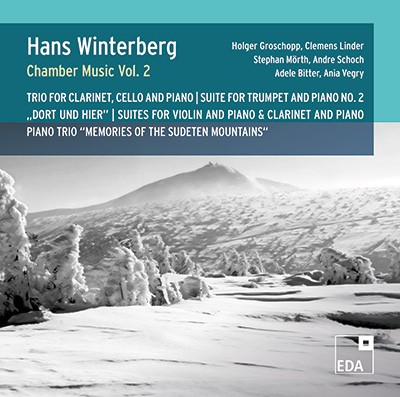Bote & Bock
In his scrapbook of reviews and clippings, now kept in the Exilarte Centre in Vienna, there is no mention of his Suite for violin and piano from 1942. Unlike his Sonata for violin and piano composed in 1935/36, there could be no performances in occupied Prague of a work by a local Jewish composer. There is no performance history, or any documentation available that would indicate performances having taken place after the war. The Suite was composed two years after Winterberg began his composition studies with the Czech microtone composer Alois Hába. It is worth mentioning that Winterberg’s inscription information into Hába’s class also lists Gideon Klein as a fellow student, though nineteen years younger than Winterberg and just starting his studies when Winterberg was returning to them as a thirty-eight year-old, after having already studied at the German Academy with Alexander von Zemlinsky and Fidelio F. Finke in the early 1920s. The fact alone that Winterberg returned to study at that time suggests that the Nazi occupation of the Czech lands had left him unemployed, thereby offering the time to continue studies with a composer considered in the forefront of the European avant-garde.
In common with the violin sonata are passages of Central European Impressionism. The co-opting of French Impressionism before turning it into something more disturbing appears to have been a characteristic of Jánacek and the following generation of composers. In contrast to the Sonata, the work is condensed with each of the three movements taking on an almost haiku like character. The thematic material is often built on chromatic seconds, which while not microtones create a narrow compass for melodic development.
Apparently, the Czech composers were looking for a national approach between Germanic ultra-chromaticism (Wagner, Reger, Schönberg) and French post-Wagnerism, mixed with folkloristic elements, polyrhythms and motivic minimalism. The final movement of the Suite is particularly Bartókian in this regard. The designation of “Suite” is also a misnomer and the work comes across more as a micro-sonata. This ability to compact form and melodic compass may well have been the legacy Winterberg took from his period of compositions study with Alois Hába.
Michael Haas, September 2023

Clemens Linder, violin / Holger Groschopp, piano
eda records EDA 053
